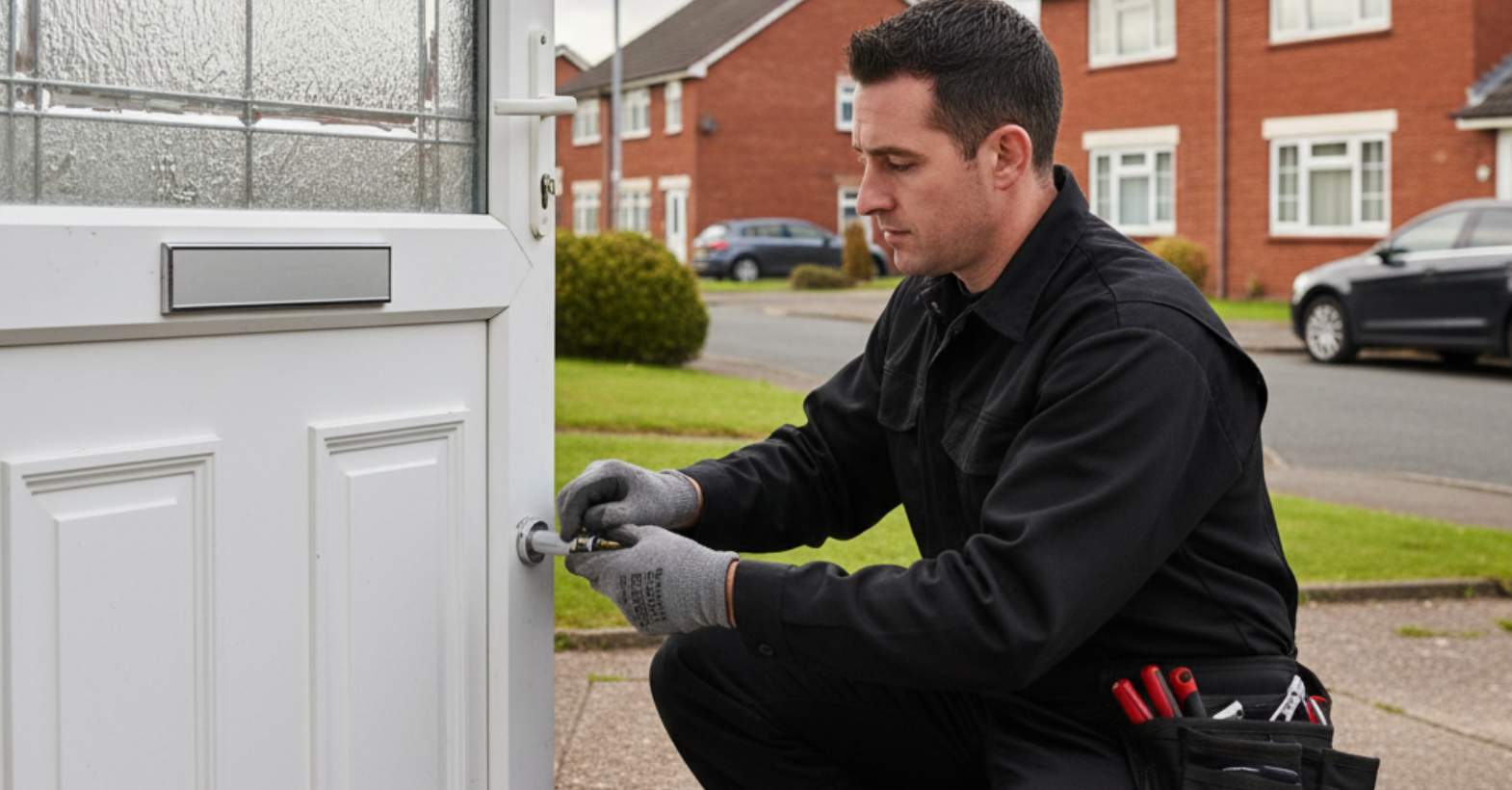Multipoint Door Lock Replacement Dublin by Lock Enforcements. Keeping homes secure in Dublin really comes down to having the right locks.
Multipoint door locks are among the most reliable since they secure the door at several points instead of just one. Click below and get a free quote to replace your Multipoint Door Lock Replacement:
If a multipoint lock stops working, replacing it quickly is the best way to keep your home safe and your doors working properly.
We all know how frustrating it feels when a door becomes stiff or the key just won’t turn. These are common signs the lock needs some attention.
Replacing a worn or broken multipoint lock brings back both security and convenience—and there’s no need to swap out the whole door.
Let’s take a look at what’s actually involved in multipoint door lock replacement in Dublin. Why does it matter, and how does the process work step by step?
Understanding Multipoint Door Lock Replacement in Dublin
When you replace multipoint door locks, you need to understand how the lock works, why it might fail, and what type fits your door best. It’s about keeping uPVC and timber doors secure while making sure the lock matches both the door and your daily use.
How Multipoint Door Locks Work
Multipoint door locks secure a door at several points, not just one. They have hooks, bolts, or rollers running along a strip fitted to the edge of the door.
When you lift the handle and turn the key, all the locking points engage together. This spreads force along the door’s full length, making it way harder to force open than a single-point lock.
That’s why you’ll often see them on uPVC doors, French doors, and patio doors. The lock mechanism sits inside the door, while the strip and locking points run vertically.
This design means the door has to be lined up properly. If the door drops or warps, the lock just won’t engage smoothly.
Common Reasons for Replacement
Most people replace multipoint locks for three main reasons: wear and tear, damage, or upgrades. The moving parts get stiff or break over time, especially if the door gets a lot of use.
Misalignment is another big one. If the door sags or swells, the hooks and bolts won’t line up with the keeps in the frame. That makes the handle tough to lift or stops the lock from working at all.
Some folks want better security. Older multipoint locks might not meet current standards, so upgrading can really cut the risk of forced entry. Sometimes, you just need to swap out the cylinder if keys go missing.
Choosing the Right Multipoint Door Lock
When you’re picking a replacement, you have to match the lock to the type of door. uPVC, timber, and composite doors often use different lock sizes and gearboxes.
Measuring the backset, spindle, and overall length helps you get the right fit. It’s also smart to check what kind of locking points you need—hooks, rollers, or maybe a mix.
The best choice depends on your door’s design and how much security you want. Many people go for an anti-snap or high-security cylinder for extra peace of mind.
If you pair the right cylinder with a well-fitted multipoint lock, you keep the door both secure and easy to use.
Step-by-Step Guide to Replacing Multipoint Door Locks
You’ll need the right tools, careful measurements, and a clear process to swap out a multipoint lock. Working step by step helps prevent damage to the door or nearby window parts and makes sure the new lock lines up right.
Preparing for Replacement
First, gather the basics: a screwdriver set, tape measure, and maybe some pliers. A torch can help if the lock area’s dim, and a small container for screws keeps things from going missing.
Check the type of multipoint lock fitted. Most uPVC and composite doors use a central gearbox with hooks or bolts along the strip.
Measure the backset, spindle, and fixing points so you can order the right replacement. Inspect nearby door and window parts too—hinges, handles, and keeps on the frame can affect how well the lock works.
If those are worn out, you might need to replace them as well. Before you take anything off, test the lock and note how the handle lifts and engages.
This makes spotting alignment issues much easier later on.
Removing the Old Lock
Start by unscrewing the handle and cylinder. The euro cylinder usually slides out once you remove the retaining screw.
Keeping the key in while pulling helps it move smoothly. Next, take out the screws holding the multipoint strip to the door edge.
The strip can be pretty long, so support it as you slide it free. Sometimes it sticks a bit, but a gentle wiggle avoids bending the metal.
The gearbox, which sits behind the handle, might come off with the strip or stay stuck in the door. If it’s stuck, ease it out carefully so you don’t damage the recess.
At this point, keep all screws and parts together—you never know when you might need them again.
Installing the New Lock
We line up the new multipoint lock with the old one to check if the measurements match. The gearbox, spindle hole, and screw points should all sit in the same spots.
If something doesn’t line up, we might need to grab a different model. No sense forcing it and risking damage.
Next, we slide the strip into the door recess. We start with the gearbox, then nudge the strip until the hooks or bolts sit flush with the edge.
Once it looks right, we secure it using the fixing screws. There’s a bit of fiddling sometimes, but it’s worth getting it just right.
The cylinder goes back in, and we tighten the retaining screw. After that, we reattach the handles and check if the spindle turns smoothly.
We always test the handle and key a few times before tightening everything down. It’s better to catch any issues now than after putting away the tools.
If the lock feels stiff, we tweak the strike plates or keeps on the frame. Even a tiny shift can make a world of difference.
Once it works smoothly, we finish tightening all the screws. A quick check to make sure the door closes and seals well against the frame and any nearby windows, and that’s about it.



